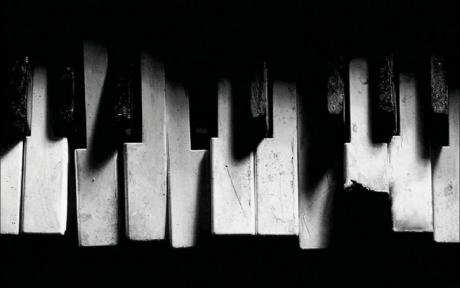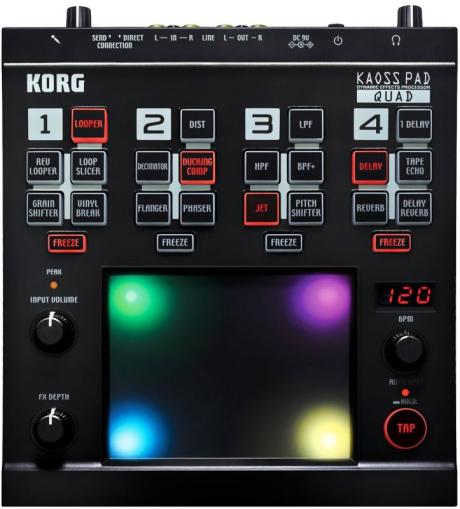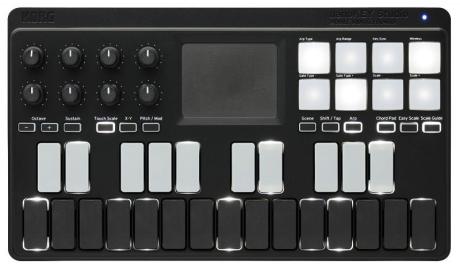Rockové klávesy - Klávesové kontroléry

Hi readers. Welcome back! This month I wanted to speak about alternate controllers and control surfaces. These days there are so many options for keyboardists looking to augment their sound and add a little expression to their rigs. We’ll be talking about regular keyboard controllers and the many other types of gadgets modern keyboardists are starting to use. Let’s dive right in.
Keyboard Controllers
There are so many of these on the market now. Some have keys, some are ribbon type controllers. I myself have four Oxygen 61 midi controllers stashed all over the world; one in Prague, one in Lugo, Spain, and one in L. A. I love to have a real B3 when I play, but when I can’t, I use these controllers with my laptop running my favorite organ software, the VB3. These keyboards are inexpensive and light. I map the percussion and vibrato controls very easily to the knobs on the upper right of the keyboard and map the drawbars to the nine virtual drawbars on the top of the controller. Check out the enclosed image. Another thing I like to do sometimes is to have a smaller controller like an LPK25, on the top of my Hammond SK-1 running synth sounds from my laptop. These keyboards have small keys and can be easily mounted on top of a keyboard with a couple small blocks of wood and some Velcro or a small clamp on bracket. It gives you another keyed surface without taking up too much room.


iPad, iPhone
These are some of the newest pieces working their way into keyboard rigs. These units can be midied to one of the keyboards mentioned above, but I kind of like to use them as their own instrument. I especially like the iPhone 4 because it's so small and runs many of the apps that I really like. I uses a high quality audio cable that runs from the iPhone to a few effect pedals and then my amp. The iPhone 4 is so small, I can rest it right behind the EQ knobs on my SK-1 and it's a perfect second sound source for tiny NYC clubs. There are many great apps for the iPhone. My favorites are the Animoog and the Morph Wiz. Animoog is a great simulation of classic Moog synthesizers. The library is expandable and the sounds are incredible. The sounds are highly editable and there is a built in delay effect that sounds great. There is even a simple looper on the app. The Morph Wiz is another one of my favorites. This app is created by Synth Wiz, Jordan Rudess, and has the best control surface for a phone synth app. The screen is highly customizable and has scales and ranges that can be easily changed in realtime making it very easy to play the sounds with a few fingers. Another amazing thing about these apps is that even the really fancy ones usually only cost about ten dollars or two hundred forty-one Czech crown. The iPad also can run all these apps and has a larger control surface and can be used with a more involved audio interface. It is a little larger though and will have to be mounted with a bracket.
Korg Kaoos Pad
This is an option that is kind of in the middle of the first two controllers we discussed. The Kaoss pad rocked the synth world when introduced in 1999. It’s a MIDI controller, sampler, and effects processor in the same way that the iPhone apps are now. It used an internal engine however instead of software. The touch pad can be used to control it’s own internal effects which include distortion, wah-wah, delay, filters, and many other common effects. The control surface can also be used as a midi controller with an x y axis much like the iPhone and iPad.
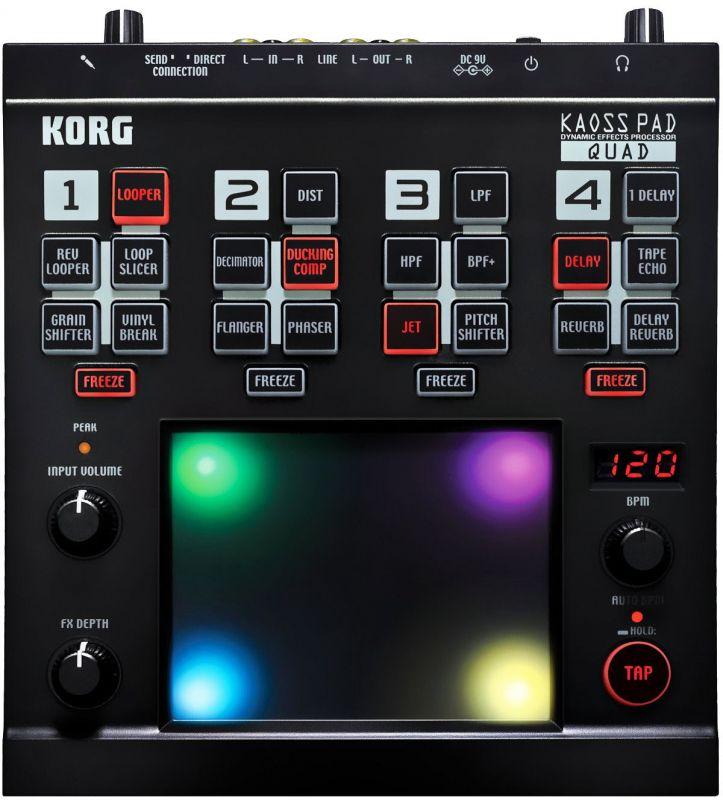
Stand Alone MIDI, Pitch, and Mod Wheel Control
There are many new control surfaces on the market that offer some kind of MIDI control without the conventional key bed. Some of my favorite new controllers of this type are the ones made by Korg such as the Nano Key Studio. This cool little unit has four different surfaces you can use; mini keys, eight knobs, eight touch pads, and a x-y axis pad similar to the Kaoos Pad. The unit will also work with blue tooth so you don't even need and USB cables.
The Sampson Conspiracy is another type of these controllers. The Conspiracy doesn’t have any keys but has more pads (25) and knobs. The pads light up in rainbow colors which looks pretty cool on stage. This unit also has DJ friendly sliders that can set up two different sonic treatments that you can switch between.
For those who really like to solder, Doepfer (www.doepfer.de/we.htm) wakes what they call a Wheel Electronic Kit. This is a MIDI kit that can be used to configure many types of MIDI controllers; modulation or pitch wheels, joy sticks, foot controllers, breath controllers, and even conventional volume potentiometers. In addition a connector for a sustain foot switch is available.
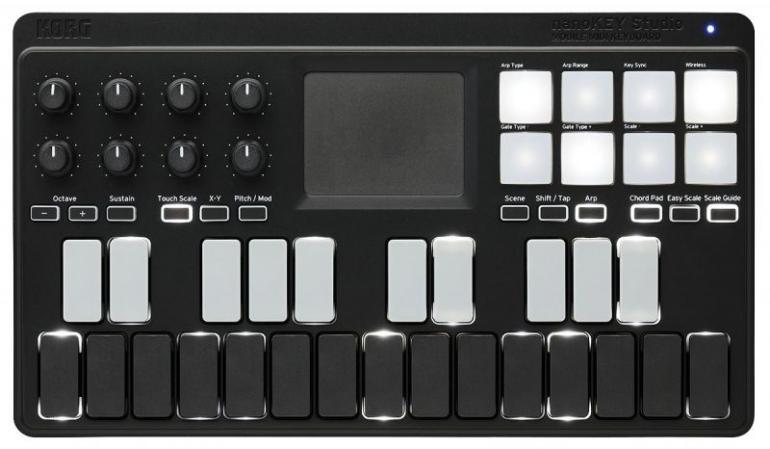
Noise Maker (Found Sound) Instruments
This is another favorite category of mine. I love to have weird little noisemakers in my rig. I hook them up to some delay and a volume pedal and use them as sound effect textures. I'm really into circuit bent keyboards these days. These are generally toy keyboards that have solder placed between the contacts on the circuit board that interrupt the contacts and cause the keyboards make glitchy noise. My favorite ones are from Reed Ghazala the inventor of Found Sound: www.anti-theory.com/soundart/workshop/
D-beam and Aftertouch
These categories are more parameters on a synth and not hardware but I thought they were relevant to our discussion. D-beam is a Roland engineered infrared controller that is manipulated by simply waving your hand over the sensor. The beam usually controls effects like vibrato or delay and has 2 infrared sensors, beam-l and beam-r, that act like an x-y axis. Distance from the beam also effects the sounds. Here’s a video link so you can see it in action: www.youtube.com/watch?v=i421sgPWi0c
Aftertouch is a function on most modern keyboards where pressure applied to a key can also trigger different effects and parameters. A common application is to have some vibrato cued by aftertouch MIDI messages. When a little pressure is applied to a key, the vibrato is cued. Other parameters like delay and filter can also be mapped to aftertouch on certain synths.
Fráze a hudební termíny
Gadgets: Technologické vymoženosti, „hračičky“.
Map: Nechci z nikoho dělat blbce, jen pro jistotu - „mapovat“ v Brianově článku znamená přiřadit určitý parametr k určitému ovládacímu prvku.
Rig: U kláves, kytary i jakéhokoli jiného nástroje znamená toto slovo veškerou vaši výbavu, sestavu, „nádobíčko“, které máte v daný moment zapojené.
Midied: Ano, někteří už začali slovo „midi“ používat i jako sloveso. Stejně jako před deseti lety by lidem slovo „googlovat“ připadalo zvláštní, ale dneska je zcela běžné, nejspíš si musíme na tento trend zvyknout i u jiných výrazů, nepříliš překvapivě tím Brian myslí „propojený přes MIDI“.
Fancy: Nóbl, luxusní, někdy ale také důmyslný či propracovaný, pokud Brian ve článku označuje aplikaci za „fancy“, myslí tím, že je to jedna z nejlepších, z „první ligy“.
More involved audio interface: Zvuková karta pro náročnější uživatele, slovo „involve“ sice normálně znamená „zahrnout“ apod., ale v tomto případě je „involved“ použito ve významu „propracovaný, důmyslný“.
Internal engine: Zde v článku má Brian na mysli „interní zdroj zvuku“.
Controller with an x y axis: Kontrolér, u kterého je možné přiřadit k jedné ose jeden parametr (či více) a k druhé jiný, Brian tím v článku myslí především dotykové plochy, ale technicky vzato by sem spadaly i nejrůznější „joysticky“.
Sonic treatment: Zpracování zvuku, změna zvuku pomocí efektů apod.
Breath controller: Tento způsob ovládání dodává realismu především simulacím dechových nástrojů, ale nikoliv výhradně, většinou se jedná o náustek připojený pomocí hadičky k syntezátoru.
Circuit bent keyboards: Klávesové nástroje vzniklé kutilskou modifikací modelů zpravidla původně určených pro děti nebo jiných „podřadných“ nástrojů, výsledkem bývá neortodoxní lo-fi zvuk, který se hodí především pro efekt.
Glitchy noise: Přerušovaný, trhaný zvuk, který se různě zasekává, „koktá“ apod., to může někdy být i žádoucí, zajímavé oživení, v článku takto Brian popisuje zvuk „circuit bent keyboards“.
D-beam: Nad D-beamem od Rolandu hráč mává rukou, podobně jako při hře na Theremin, k různým osám lze přiřadit různé parametry apod.
